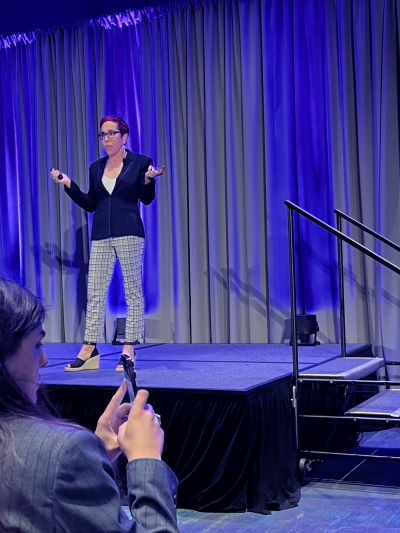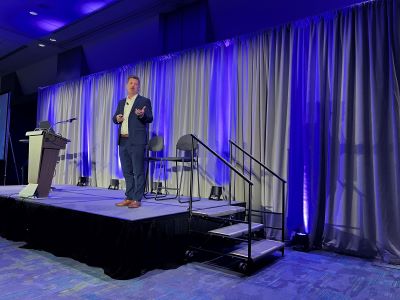HR Daily Advisor was in Chicago for SHRM’s 2024 conference this week! After three days of engaging speakers, here are some key takeaways we learned.
AI
The rise of AI in the world of work has presented a significant shift in how HR functions are performed. Although generative AI has been both a hot topic and key tool organizations are looking to implement, it’s paramount to understand when to tap AI solutions and when to engage human consultants.
Melissa Daley, President of Orca Intelligence, recommends HR leaders have an AI adoption strategy. “Don’t just implement AI without a consultant,” Daley urged attendees. “You need to know how it will be designed and impact your business.”
She noted that each department has its own need for AI, which is why it’s crucial for HR and IT teams to work together. “It’s important that you identify how you can use and benefit from AI,” she explained. “It shouldn’t work against you.”
Christopher Gross, Founder and CEO at Ascension Worldwide, added that HR professionals should consider the legal ramifications of simply taking AI content and not fact-checking it with human intelligence.
“The system will produce the system,” Gross said. “Be intentional and aware of the information you input into AI. It will take you more time getting out of hot water than using that tool quickly.”
Kari Naimon, Founder/CEO of AixHR, agreed. In her session, she highlighted the opportunity organizations have to implement AI solutions that complement and elevate their existing practices.
Understanding AI is like “training a puppy,” Naimon described. Here are four key tips she recommends HR leaders remember:
- Keep the human in the loop (audit, check, and review AI). “AI should get you 70 to 80 percent there, not 100 percent,” she said. “Do not copy and paste.”
- Learn how to use AI, not the tools that do AI for you.
- Learn how to prompt yourself. “Set up the personality,” Naimon explained. “Tell it what you’re going to do. It’s a conversation. Just keep asking it questions.”
- Be intentional. “Feed it all of the information it needs,” she said. “Ask it if it understands what you’re asking and what it sees. Start simply first and add information as needed.”
Empathy
Do you think empathy is essential in the workplace? According to Harvard Business Review, companies that are empathetic outperform their counterparts by 20 percent.
Jeremy York, SHRM-SCP, Lead Consultant and President at InvigorateHR, LLC, explained that changing workplace dynamics have impacted organizations significantly. “We have a dynamic now where people are expecting more from us,” York said. “Previously, people only expected a paycheck.”
He added that empathy is a direct pathway to getting more authenticity and meaning in the workplace—and could be a potential retention strategy.
“When there’s empathy in the workplace, employees are engaged, connected, and collaborative,” he explained. “Organizations who practice this will have their pick of the litter.”
Recruiting & Retention
Have you wondered what job seekers truly desire? Nathan Wigert, Senior Talent Strategy Advisor at Indeed, shared insights for organizations to enhance engagement and visibility on Indeed, attract high quality candidates, and stand out from their competitors.
So, what’s the first step? Wigert advises a perspective change. “Start thinking about them as consumers not job seekers,” he said. “What’s in it for the individual you’re selling to? Why are they interested in you and not your competitor down the street?”
Next, keep your job posting simple and straight to the point. “Job seekers view a big list of requirements and qualifications in a job ad as a red flag,” Wigert explained.
He added that highlighting the “Big 6” job seekers look for helps as well, which includes:
- Benefits
- Compensation
- Job Type
- Requirements
- Shift Information
- Location
“Consumers want to know what’s in it for them upfront,” Wigert reminded attendees. “When they open your job ad this is what they need to see first. Put the information they’re looking for early in your job ad.”




